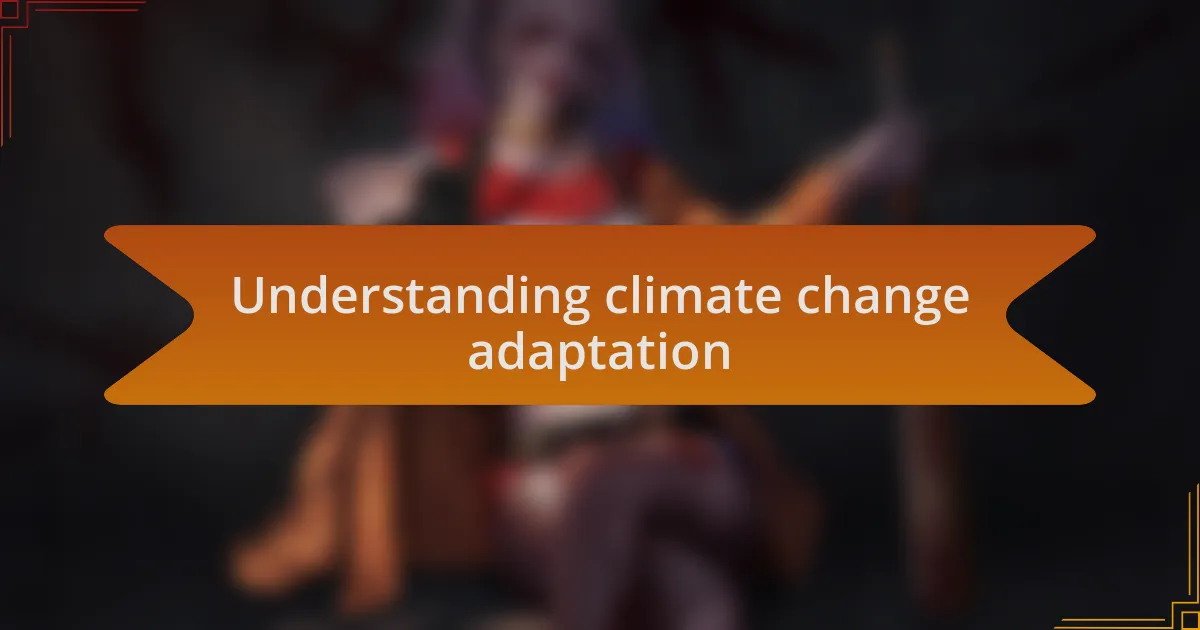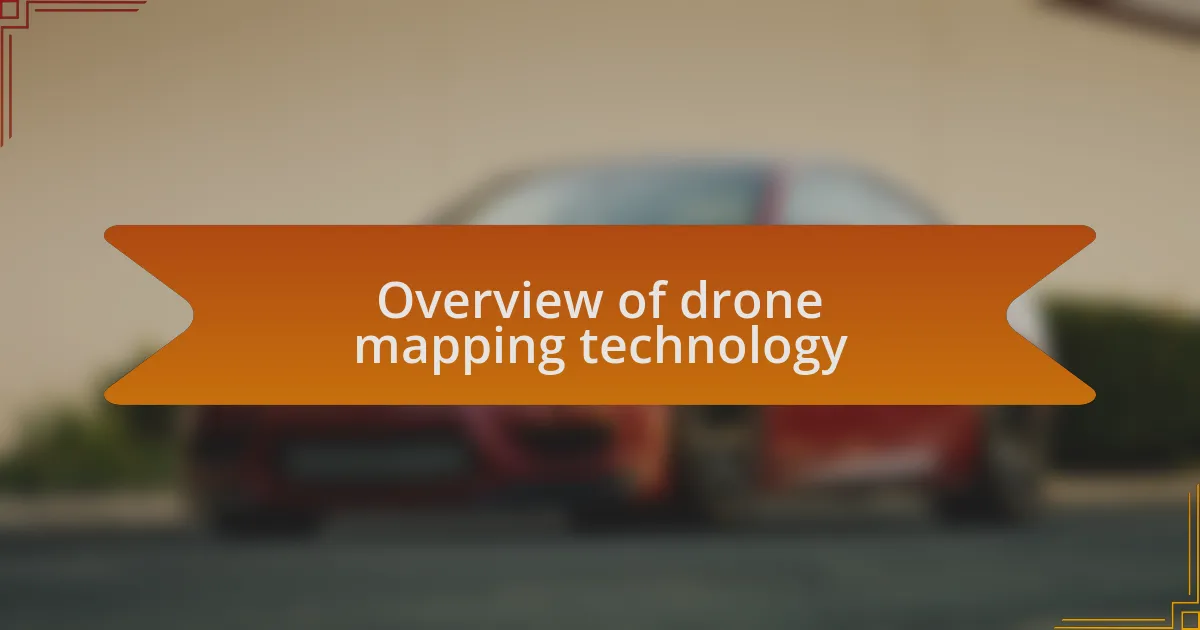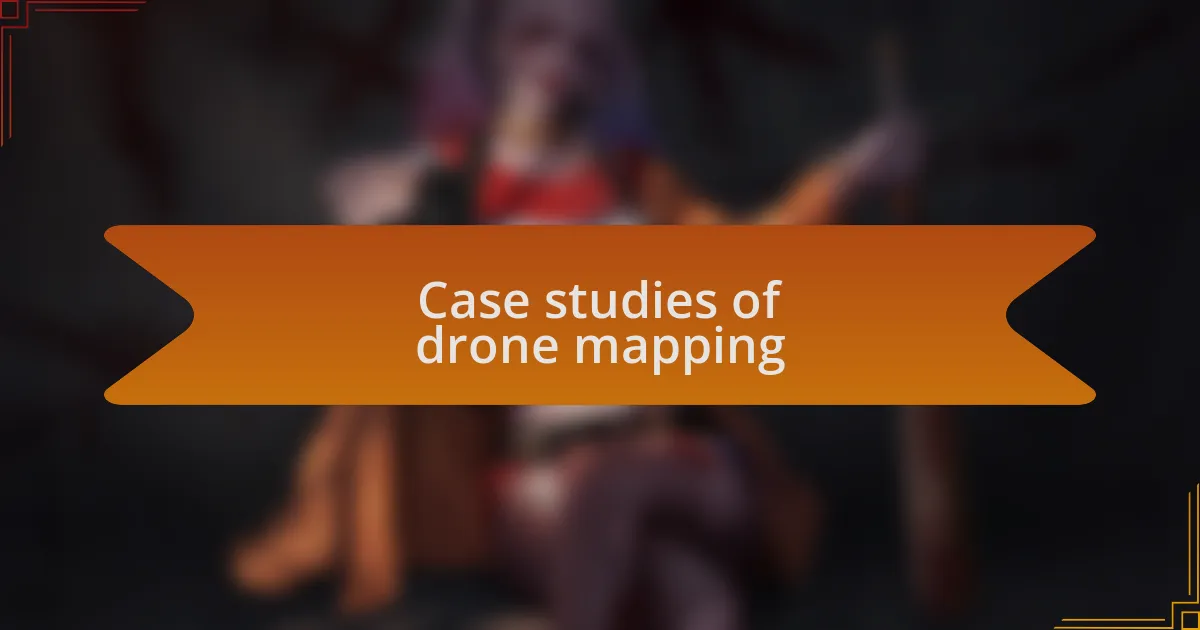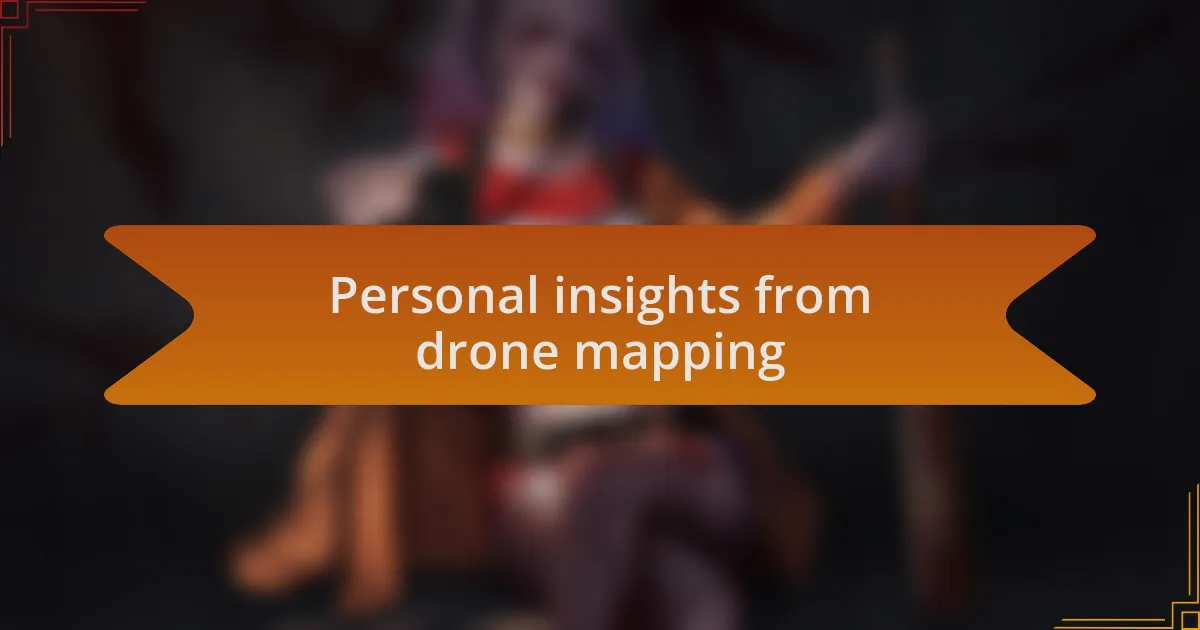Key takeaways:
- Climate change adaptation is essential for building resilience in communities facing unpredictable environmental changes, particularly in agriculture.
- Drone mapping technology provides critical data for identifying vulnerable areas and fosters collaboration among stakeholders to create tailored adaptation solutions.
- Real-time visualizations from drone mapping evoke emotional responses and empower communities to take ownership of their environmental challenges.
- Engaging local perspectives and educating the next generation are crucial for cultivating environmental stewardship and addressing climate issues effectively.

Understanding climate change adaptation
Climate change adaptation is like adjusting the sails on a boat when the wind shifts unexpectedly. I remember standing on a beach in Zanzibar, feeling how the tides had changed over the years. It made me realize that acknowledging adaptation is vital; we must embrace strategies that help communities thrive despite the unpredictable impacts of climate change.
Imagine a farmer knowing that their usual planting schedule is no longer reliable due to shifting rainfall patterns. This had me thinking about how our agricultural practices must evolve. It’s not just about combating climate change; it’s about finding resilience in our crops, livelihoods, and everyday lives.
When I reflect on adaptation, I can’t help but wonder: how can we harness local knowledge and innovative technologies to build stronger, more climate-resilient communities? Engaging with local perspectives often reveals profound insights that can guide effective adaptation strategies. From my experiences, I’ve seen that collaboration and understanding of local contexts are paramount to success.

Importance of drone mapping
Drone mapping is becoming an essential tool for understanding the intricate changes in our landscapes, especially in areas like Zanzibar. I recall the first time I witnessed a drone soar above, capturing detailed images of coastal erosion. It struck me how these visuals provide critical data that can inform strategies for adaptation, revealing vulnerable areas that need immediate attention.
The ability to quickly survey large areas allows for timely responses to environmental shifts. When I helped with a local project, the drone maps made it possible to identify which agricultural zones were most at risk from flooding. This not only saved time but also empowered farmers to take proactive measures, proving the direct impact that technology can have on local communities.
Moreover, drone mapping fosters a collaborative approach, making data accessible to various stakeholders, from policymakers to community members. Why should such insights be confined to experts? I believe involving local voices in interpreting this data can lead to tailored adaptation solutions that resonate with the community’s needs and aspirations. Engaging with the information in this way can ignite a sense of ownership and motivation to take meaningful action.

Overview of drone mapping technology
Drone mapping technology uses aerial photography and advanced sensors to create detailed, scalable maps of various terrains. I remember the first time I sat with a team reviewing high-resolution images captured over Zanzibar’s coastline. It was fascinating to see how terrain shifts and vegetation patterns could be analyzed in real-time—almost like uncovering hidden stories of our environment.
What truly strikes me about drone mapping is its versatility. Whether collecting data for agricultural assessments or monitoring ecological changes, the technology adapts to diverse needs. I recall assisting in mapping a local wetland, and the results were eye-opening. We suddenly had a clear visual narrative that highlighted areas needing protection, igniting conversations on conservation strategies among community members.
As I delve deeper into the mechanics of drone mapping, I realize this technology democratizes information, bridging gaps between technical knowledge and community engagement. When everyone can visualize what’s happening in their environment, it sparks a dialogue. How can we ensure this information shapes not just policy but also inspires grassroots action? From my experiences, it’s clear that fostering a shared understanding of our landscape is essential for effective adaptation to climate change.

Case studies of drone mapping
When I worked on a project mapping coral reefs in Zanzibar, I saw firsthand the transformative power of drone technology. Using aerial imagery, we tracked coral bleaching patterns, revealing stark changes over time. The emotions that surged through the team when we saw the deterioration of these vibrant ecosystems were palpable, sparking a sense of urgency to address the impacts of climate change.
One of the most remarkable case studies I participated in involved drone mapping in urban areas vulnerable to flooding. The data we gathered painted a clear picture of high-risk zones, leading to proactive planning measures. It made me ponder—how often do communities have access to such detailed insights? I feel that empowering residents with these visuals can reshape their understanding of risk and safety in their neighborhoods.
Reflecting on a recent initiative, we collaborated with local farmers to map agricultural fields, assessing soil health and yield potential. The joy expressed by farmers as they reviewed the maps, highlighting problem areas, was inspiring. It made me realize that when people can see data represented in a tangible way, it ignites a sense of ownership and responsibility toward their land. Isn’t it fascinating how technology can cultivate not just insights but also community resilience?

Personal insights from drone mapping
While working on a drone mapping project in Zanzibar, I was struck by the emotional impact of visualizing deforestation. The moment our team laid eyes on the stark contrast between lush forests and barren lands captured by the drones, it was as if we were witnessing the region’s heartbeat slowing down. How can we ignore the visual evidence in front of us? This powerful imagery ignited a deep motivation to advocate for sustainable practices among local communities.
In another experience, I assisted in mapping coastal erosion areas. As we analyzed before-and-after images, I felt a mix of frustration and determination. Watching beautiful shorelines disappear reinforced the importance of adaptation strategies. I often found myself asking—how can we hope to preserve these precious landscapes? This sense of urgency made me believe that each map we produced could be a call to action for better conservation efforts.
Finally, during a workshop with local students, I guided them through the creation of their own drone maps of their neighborhoods. Their enthusiasm was infectious, and I was genuinely moved by their eagerness to learn. Seeing their eyes light up at the sight of their world from above made me reflect: isn’t education about empowerment? This experience reminded me that sharing knowledge and tools can cultivate a new generation of environmental stewards ready to tackle climate challenges.